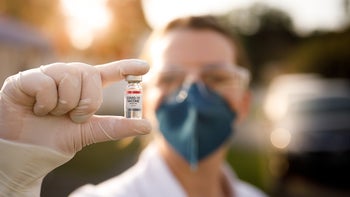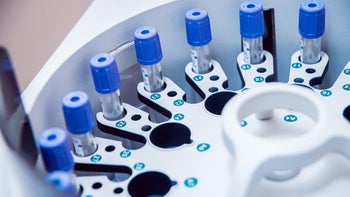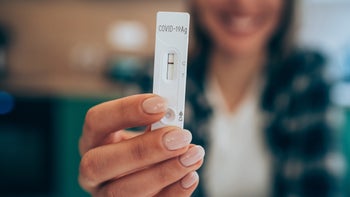
Pulse Oximeter Readings and Accuracy, Plus Tips on Use
Key takeaways:
Pulse oximeters are useful tools for checking oxygen levels in your blood, but they’re not always accurate.
Prescription pulse oximeters have been tested for accuracy and reviewed by the FDA. They’re more accurate than over-the-counter (OTC) devices.
If you have a darker skin tone, your pulse oximeter reading may not be as accurate. The FDA is currently reviewing this issue and may change how these devices are tested.
Don’t rely solely on pulse oximeter readings to gauge oxygen levels. Track other symptoms as well.
Table of contents
If you have a lung condition like asthma or chronic obstructive pulmonary disease (COPD), your healthcare team may recommend that you monitor your oxygen levels at home with a pulse oximeter. A pulse oximeter measures the amount of oxygen in your blood and alerts you if your levels drop below what’s considered normal.
But pulse oximeters aren’t always accurate. According to the FDA, several factors can affect accuracy, including poor circulation, skin thickness, smoking, and even fingernail polish. What’s more, a 2020 report suggests that your reading may not be as accurate if you have a darker skin tone.
Here, we’ll cover how to use a pulse oximeter, how to interpret results, and when to see a healthcare professional.
Search and compare options
What is a pulse oximeter?
A pulse oximeter is a small device that clips to your finger or earlobe and measures the amount of oxygen saturation in your red blood cells (called SpO2). A pulse oximeter works by shining a special type of light through your tissue, skin, and blood. Blood and tissue will absorb some of that light. A sensor on the other side measures how much light gets through. This information is then used to calculate your SpO2.
This helpful tool grew in popularity during the COVID-19 pandemic, but it has always been useful for people with chronic breathing problems. Low oxygen is a serious symptom of many lung diseases and it's often a sign that you need medical attention.
You can order a pulse oximeter online or pick one up at the pharmacy. But not all pulse oximeters are created equal. There’s a big difference between a prescription device and one that you can purchase over the counter (OTC):
Prescription pulse oximeters: These are tested for accuracy and reviewed by the FDA. They’re typically used in healthcare settings like doctors’ offices and hospitals. In some cases, a healthcare professional may prescribe one for at-home use.
OTC pulse oximeters: These are sold online or in pharmacies without a prescription. They’re not reviewed by the FDA and may be less reliable than prescription pulse oximeters. They shouldn’t be used for medical purposes.
How do I take a pulse oximeter reading?
If a healthcare professional prescribes you a pulse oximeter, ask them to show you how to use it, when to take a reading, and how often. For most healthy people, readings will generally fall between 95% and 100% (but this can vary, which we’ll cover later). Write down your numbers in a notebook, including the date and time, to track your readings.
Here are basic instructions for most oximeters:
Before you clip the device onto your finger, make sure your hand is warm and your fingernail is free of polish. When you clip it on, you may feel a slight pinch or pressure, but there should be very little to no pain.
For best results, use a finger without nail polish or an artificial nail. Most of the time, healthcare professionals put the device on your index finger. Your middle finger is another common option.
Relax your hand below heart level and sit still. Then turn on the device.
In a matter of seconds, the oximeter will show your pulse and oxygen levels.
Vital signs and your health: Vital signs, like oxygen saturation, provide a quick snapshot of your health. Learn about normal ranges and how they can change.
How to improve your circulation: Poor circulation can affect your health in different ways. There are steps you can take to improve it, such as dietary and other lifestyle changes.
Diaphragmatic breathing: Also called “belly breathing,” this technique can help improve oxygen levels in your blood. Learn the other health benefits.
How to read a pulse oximeter
Once you’ve taken your reading, the device will display two numbers:
Oxygen saturation: The number below or next to “SpO2” is your oxygen level.
Pulse: The number below or next to “HR” (heart rate) or a heart symbol is your pulse.
If a healthcare professional has recommended you use a pulse oximeter at home, they should give you instructions for what to do if the readings are higher or lower than expected. This will vary from person to person, so if you’re not sure what’s right for you, it’s always best to ask.
Here are a few general guidelines when interpreting your pulse oximeter reading:
Check your oxygen saturation level: Most people need an oxygen saturation level of 89% or higher to keep their cells healthy. Is your reading higher or lower than this number?
Compare it with your baseline numbers: It’s important to compare your reading with your baseline numbers. For example, if your baseline oxygen saturation level is 98%, you shouldn’t wait until your levels drop below 89% to get help. Looking at trends over time can also give you better insight.
Consider the accuracy rate: Prescription oximeters typically have an accuracy rate that’s around 4% above or below a reading. So, an oxygen level of 92% could actually be as low as 88% or as high as 96%. Pulse oximeter readings also tend to be most accurate at levels higher than 90%.
Listen to your body: You shouldn’t rely on a pulse oximeter reading to tell you when to get medical attention. Shortness of breath, chest pain, and a racing heart rate can all be signs of low oxygen levels — even if your reading is within a normal range.
Keep in mind that pulse oximeter readings are estimates. There are a number of factors that can affect the accuracy of your results.
What are normal blood oxygen levels?
For most healthy adults and children, normal blood oxygen levels are generally 95% or above. Ideal blood oxygen levels are pretty much the same across your lifespan. Age by itself doesn’t affect readings. But some people can have a lower acceptable SpO2, especially if they have a medical condition like COPD or heart failure. Your level might also be lower if you live at a high elevation.
Here are some basic guidelines to keep in mind.
SpO2 level | |
|---|---|
Normal SpO2 for healthy adults | 95%-98% or above |
Acceptable SpO2 for healthy adults | 90% or above |
Low SpO2 for healthy adults | 89% or below |
How accurate is a pulse oximeter?
It depends. According to the FDA, pulse oximeters are a helpful tool for estimating your blood oxygen levels — but they’re not always accurate. They don’t work well in certain situations, like when you’re outside in the sun or if your oxygen level is lower than 80% to 90%. They also don’t work as well for people who have darker skin, poor circulation, or who smoke cigarettes.
Even under ideal conditions, pulse oximeter readings aren’t very accurate. The National Institutes of Health (NIH) warns users that a pulse oximeter reading can be off by as much as 4 percentage points. In other words, if your pulse oximeter result is 90%, your true SpO2 could be anywhere from 86% to 94%.
Let’s take a closer look at some of the things that can affect pulse oximeter readings.
What factors can affect the accuracy of pulse oximeter readings?
There are a number of things you can do to help get the most accurate pulse oximeter reading. To start, look at the factors below that may affect your readings and adjust accordingly.
Wearing nail polish or artificial nails
Certain colors of nail polish, as well as artificial acrylic nails, may interfere with your reading. More recent evidence suggests this may not actually be the case, but it’s a good idea to remove any polish or artificial nails to be sure. You can also clip the device to your earlobe or an unpolished toenail on one of your small toes.
Bright light
Bright light, like direct sunlight, can interfere with how the pulse oximeter’s light measures oxygen levels. Take a reading indoors, away from bright lighting.
Poor circulation or cold hands
Blood flow to your fingers may be lower when your hands are cold, or if you have poor circulation. Try massaging your hands for 1 to 2 minutes to increase blood flow before clipping on the device.
Smoking
If you smoke, your reading may be artificially high. People who smoke have higher levels of carbon monoxide in their blood. The carbon monoxide may look like oxygen to the pulse oximeter, which can overestimate the oxygen levels for your result.
Darker skin tones
A 2020 report showed that dangerously false pulse oximeter readings were much more common in Black people than in white people. Specifically, a higher number of Black people had lower-than-normal oxygen levels, even though the pulse oximeter showed normal levels.
Recently, an FDA advisory panel met to discuss this exact issue, which applies to both prescription and OTC devices. The FDA is currently reviewing the panel’s recommendations, which include suggestions for improving how these devices are regulated, tested, and labeled.
Until improvements are made, keep in mind that your reading may not be accurate if you have a darker skin tone. Keep a record of your baseline values and make note of any changes. But don’t rely solely on your readings when making decisions about your health.
How can I tell if my pulse oximeter reading is inaccurate?
It’s very difficult to know if your pulse oximeter is inaccurate without comparing it with a reading from a medical-grade device or a blood sample. But it’s important to remember that pulse oximeter readings are only an estimate of your blood oxygen levels.
If your pulse oximeter reading is very different from what it usually is and you feel fine, it’s possible that it’s just an inaccurate reading. Likewise, if you feel lousy but your pulse oximeter reading is normal, it’s best to trust your instincts.
Keep in mind that some conditions — like methemoglobinemia, for example — can cause low oxygen levels without causing you to feel short of breath. So, if your oxygen levels are reading low but you feel fine, it’s probably still a good idea to reach out to your healthcare team to discuss what’s happening.
What are the dangers of an inaccurate pulse oximeter reading?
An inaccurate reading may prevent you from getting the medical attention you need. You may think you’re doing fine because your reading is normal. But in reality, your oxygen levels could be dangerously low.
Anyone monitoring their oxygen levels, especially people with darker skin, should understand that a pulse oximeter is an imperfect device. It shouldn’t be the only deciding factor in seeking care.
When should I contact a healthcare professional?
If your pulse oximeter reading is lower than normal for you and you feel unwell, it’s always best to touch base with your healthcare team.
If you have an underlying lung condition and your healthcare team has recommended home pulse oximetry, you should have a clear plan of action for how to handle a lower-than-average reading. If not, then it’s worth asking a healthcare professional for one.
Even if your pulse oximeter reading is normal but you feel unwell, trust your instinct. This is especially true if you have an underlying lung condition or if you think you could have COVID or another potentially severe lung infection.
The FDA recommends looking for these signs that indicate your blood oxygen levels could be low:
A bluish color to your lips, nails, or face
Shortness of breath or trouble breathing
Chest pain or tightness
A worsening cough
Restlessness or discomfort
A racing or fast pulse
Frequently asked questions
To get consistently reliable results and track your readings over time, it’s best to use the same hand and the same finger. You may get slightly different results depending on the hand and finger you use.
The best finger for a pulse oximeter reading is one that doesn’t have nail polish or an artificial nail. Healthcare professionals often use your index finger. But a small research study of right-handed people found that the right middle finger or thumb actually seemed to work the best.
If you can’t get a reading with your pulse oximeter, double-check that the sensor fits snuggly. Make sure you’re sitting still and away from bright light. To increase blood flow, you can also try moving or massaging your hands if they’re cold or you have poor circulation. If you’re still having trouble, you may need to contact the manufacturer of your device.
The bottom line
Pulse oximeters can be useful tools, but they may not be completely reliable when making decisions about your health. Factors like poor circulation, skin pigmentation, and smoking can affect your reading. The type of device you’re using can also make a difference.
Why trust our experts?



References
American Lung Association. (2024). Pulse oximetry.
American Thoracic Society. (2021). Pulse oximetry. American Journal of Respiratory and Critical Care Medicine.
Basaranoglu, G., et al. (2015). Comparison of SpO2 values from different fingers of the hands. SpringerPlus.
Bottrell, J. (2023). Interpreting oxygen levels. COPD.net.
Desalu, I., et al. (2013). The effect of nail polish and acrylic nails on pulse oximetry reading using the Lifebox oximeter in Nigeria. The Nigerian Postgraduate Medical Journal.
European Society of Anaesthesiology. (2018). Study shows nail treatments do not affect readings of patients' oxygen levels, despite widespread concern. ScienceDaily.
McFarling, U. L. (2022). FDA panel asks for improvements in pulse oximeters. Stat.
MedlinePlus. (2024). Pulse oximeter.
MedlinePlus. (2024). Pulse oximetry.
National Institute of Biomedical Imaging and Bioengineering. (2023). Getting an accurate read on pulse oximeters. NIH MedlinePlus Magazine.
Seifi, S., et al. (2018). Accuracy of pulse oximetry in detection of oxygen saturation in patients admitted to the intensive care unit of heart surgery: Comparison of finger, toe, forehead and earlobe probes. BMC Nursing.
Sjoding, M. W., et al. (2020). Racial bias in pulse oximetry measurement. The New England Journal of Medicine.
U.S. Food and Drug Administration. (2021). Pulse oximeters and oxygen concentrators: What to know about at-home oxygen therapy.
U.S. Food and Drug Administration. (2023). CDRH takes steps to advance further discussions on pulse oximeters.
U.S. Food and Drug Administration. (2023). Pulse oximeter accuracy and limitations: FDA safety communication.
U.S. Food and Drug Administration. (2023). November 1, 2022: Anesthesiology and respiratory therapy devices panel of the Medical Devices Advisory Committee meeting announcement.
























